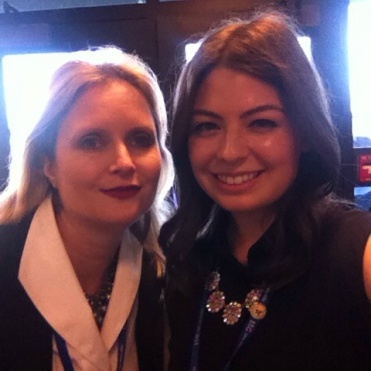I cannot believe my IMC journey at WVU has come to an end! For the past 2 ½ years, I have been working full-time while pursuing a Master of Science in Integrated Marketing Communications.
Here are some of my tips for current or prospective students:
- Learn
We all come to the program with the same goal: to learn more than we know now. This program was an investment in myself and if I️ didn’t take the time to understand, learn, and grow then I️ would be doing myself a huge disservice. Read the course material, remain active in the discussions, and be able to prove your new knowledge. - Life happens.
While graduate school happens, so does life. Things both expected and unexpected arose while I was enrolled in the program including a career change, company relocation from DC to Orlando, new puppy (that counts, right?), international travel…just to name a few. It’s easy to become overwhelmed. Manage your time, plan ahead when you can, and know you may still find yourself in an airport terminal or coffee shop across the world in order to complete assignments. - Rely on your new network.
I have formed friendships and gained an invaluable network with classmates I have never met in person. In my opinion, this involvement with individuals from around the world and involved with marketing in different capacities is a top benefit of the program. Some of my most insightful lessons came from fellow students who challenged points I made, furthered my understanding, or offered new perspectives. - Implement best practices.
I’ll be the first to admit I doubted the “learn today, apply tomorrow” promise with the curriculum. As marketers, we need to play in active role in this practice. With WVU’s commitment to updating the program, you’ll find the current trends of the industry are present throughout. Whether you are part of a start-up, nonprofit, or large corporation, you will uncover tactics to utilize in your day to day efforts if you keep an open mind and concerted effort. - Do it for yourself.
Don’t enter the program for anyone other than yourself. Not for your organization, not for your parents, not to say you did. You’ll hate every step of the journey if you only have your eyes on the end. You’ll emerge a stronger, smarter marketer and you alone will steer your next direction.
Now what? There’s still a lot of work to do!
As the marketing field is ever-changing, it’s always important to stay committed to remaining a resilient marketing professional. The learning truly never comes to an end.
With the completion of IMC program, I feel confident as ever in achieving continued success in my career.
About Megan
Megan Keating is the Director of Marketing at the International Association of Amusement Parks and Attractions, an international trade association for permanently situated amusement facilities worldwide. Megan oversees all aspects of attendee marketing for IAAPA signature events including IAAPA Attractions Expo which experienced 38,000 attendees in November 2017. She graduated from West Virginia University with a Bachelor of Science in Journalism and a Master of Science in Integrated Marketing Communications.
https://www.linkedin.com/in/meganmkeating/












